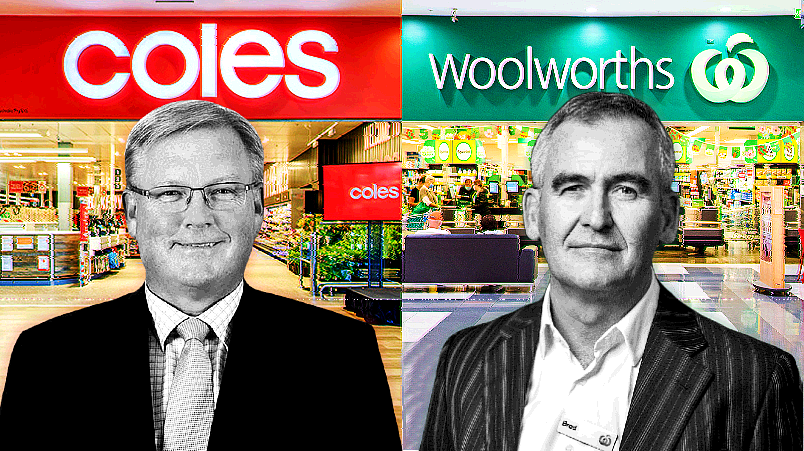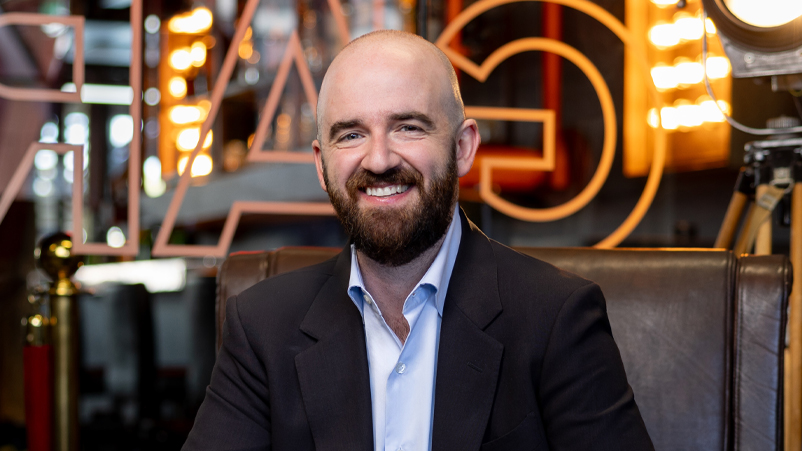Coles versus Woolies: ecom drops as shoppers hit the streets, Brad Banducci says decline faster than predicted; customer fulfilment overhaul ‘really painful’

Consumers are once again wearing out the shoe leather and returning to stores to stock up on the weekly grocery shop. As a result ecommerce sales are down even as digital engagement is increasing. And the complexity of creating new fulfilment models is causing management headaches and construction delays for Australia's two giant grocers.
What you need to know:
- Shopper behaviour is returning to pre-pandemic norms.
- Ecommerce performance dropping but digital engagement overall is growing.
- High fixed cost base at WooliesX makes its bottom line performance especially sensitive to revenue shifts.
- The Customer Fulfilment Centre (CFC) model at the heart of each company’s ecommerce supply chain strategy is proving to be complex and difficult to implement.
It’s been a lot of work between Woolworths Supermarkets and WooliesX as we have moved volumes out of stores into the CFCs [customer fulfilment centres]. They are an important part of what we do, but boy, they are painful to get them fully commissioned and scaled out.
Australia’s grocery shoppers have largely returned to pre-Covid behaviour, at least in the world of FMCG, with both Woolworths and Coles CEOs flagging a sustained rise in in-store shopping and an ecommerce decline in their recent earnings calls with investors.
Both businesses have invested heavily in digital transformation during the first years of this Covid-disrupted decade, with a focus on ecom and supply chain resilience.
Ecom drops
Of the two, we know a bit more about digital progress at Woolworths, largely because of greater transparency around WooliesX.
Its performance was broken out in the investor discussions, underlining a sharp ecom reversal in the second half of 2022. Natalie Davis, managing director Woolworths Supermarkets, said the first quarter in particular suffered “a very dramatic and volatile decline.”
A 7.5 per cent reversal in B2C ecom revenues for the half compared to the previous year translated into a 37 percent hit to the bottom line at WooliesX, a point noted by Goldman Sachs analyst Lisa Deng who described the unit as a “high fixed cost leverage business.”
At 11 per cent for the half, growth appears to be slowing at Cartology, Woolworths expanding media business (in FY 22 Cartology grew revenue by 29 per cent).
That result gives weight to some market views that Cartology is "maxing out" on ad revenues from its existing FMCG supply-base – at least within its own digital properties – and may need to push harder into what Cartology boss Mike Tyquin calls "non-endemic" brands, i.e not grocery. But the unit is now also making a concerted play for off-network revenues, i.e. using shopper and loyalty data to target audiences around the web, across channels such as YouTube and BVOD.
Coles faced the same headwinds, with ecom sales falling from $1.5bn to $1.4bn for the half while penetration dropped from 8.2 to 7.2 per cent. The company chose instead to crow about the 102 per cent ecom growth over the last three years – and a 287 per cent surge in booze sales online during the same period.
Smashed Ocado?
Both companies have also grappled with the challenges of developing new customer fulfilment centres, or CFCs — part of a hub and spoke approach to ecommerce distribution that underpins both strategies. Woolworth CEO Brad Banducci was particularly vocal on the difficulties of developing the CFCs, describing the work as “really painful.”
Coles Group CEO Steven Cain meanwhile, was more oblique, simply referencing the fact that NSW CFC is behind schedule – a point the company had earlier noted in its AGM. (He did say over all the project was progressing well).
“There has been a construction delay at the New South Wales site," per Cain. "An assessment is ongoing to determine what further impact there may be on schedule commissioning. However, based on information from Ocado (Coles Group’s partner charged with helping to develop its online grocery shopping experience) we are working towards the Victorian CFC being commissioned ahead of the New South Wales one with an incremental ramp-up period commencing mid-2024, as previously advised, and the New South Wales CFC now in the second half of FY 2024.”
Digital engagement across our group websites and apps has continued to grow strongly.
Clicks vs. bricks
Woolworths' Banducci said Australians are returning to pre-pandemic shopping habits in droves.
“Customers also shopping more on the weekend in malls and shopping centres are also seeing an increase in visitation relative to neighbourhood stores,” he said.
That trend is accelerating. "I would say in the last two weeks, if you looked at the behaviour [compared] to pre-Covid, [it] is literally back to where we were in a very broad sense.”
But he said digital engagement (if not ecom revenue), remains solid.
“Digital engagement across our group websites and apps has continued to grow strongly," per Banducci. with half of the digital traffic growth coming from the company's apps, particularly its Every Day Rewards loyalty app.
But Banducci was frank about the scale of ecom decline over the half.
“We knew it would come off because of Covid disruption, particularly in New South Wales earlier in the half and then later in the half of Victoria, but it came off more dramatically than we had expected. And so our forecasts in e-commerce that we have put into our plans were higher than the numbers we had.”
He noted however that e-commerce sales trends have started to stabilise with signs of growth resuming.
Fulfilment crunch
Woolworths also commissioned two customer fulfilment centres during the half – one in Rochedale in Queensland and the other in Carinbah in NSW.
Banducci said the yards were proving hard.
“It’s been a lot of work between Woolworths Supermarkets and WooliesX as we have moved volumes out of stores into the CFCs. They are an important part of what we do, but boy, they are painful to get them fully commissioned and scaled out.”
Natalie Davis also underlined difficulties with the last mile of the supply chain – getting the goods to people's houses.
“The last mile for us is an area that frankly has been quite challenging, particularly in our fleet last mile. That’s an area that we are focused on for the second half. That’s driven by all sorts of things. Basket size is being slightly different as we see a higher order frequency coming up. We have also got a lot more traffic on the road.”
Wage and fuel costs also added to the pain.
The fit-out of these facilities, especially The Hive and Grid are unique in Australia, requiring complex construction management work systems to be developed and implemented.
Coles said sales trends are also returning to pre-Covid norms.
“They're not quite there, but they're getting back to a very similar level," said Steven Cain. "The main difference is there's a slight increase in neighbourhood versus pre-Covid and city centre stores are not like where they were before.”
Like Woolworths, Coles is also investing heavily in customer fulfilment centres as part of its ecommerce strategy.
“In partnership with Ocado, we're making progress in the development of both our New South Wales and Victorian centres," per Cain. "The fit-out of these facilities, especially The Hive and Grid are unique in Australia, requiring complex construction management work systems to be developed and implemented.”
At its 2022 AGM the company flagged a construction delay at the New South Wales site. Once the two Ocado CFCs are in place, Cain claimed Coles would be able to "deliver the best ‘delivered in full on-time metric’ in Australia with an extended range.”
It also means Coles will be able to sell a much higher range of products, with estimates suggesting it will broadly double its SKUs. As well as increasing range and volumes, that also brings potential benefits to Coles media operation, Coles 360, because it means they can tap more suppliers to buy ads.


